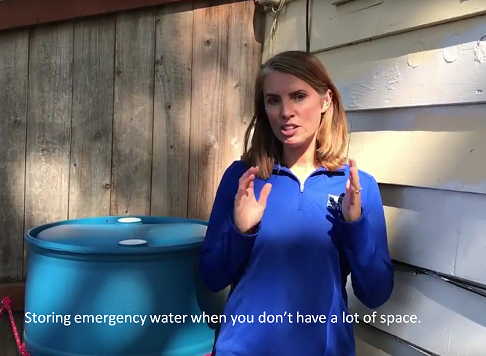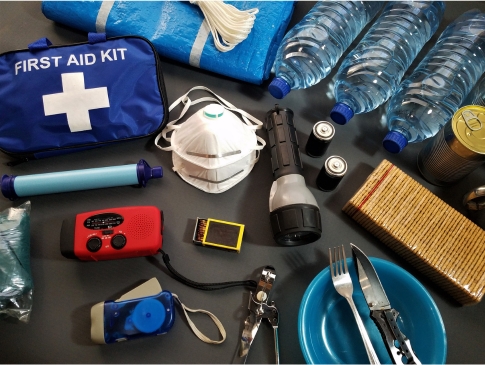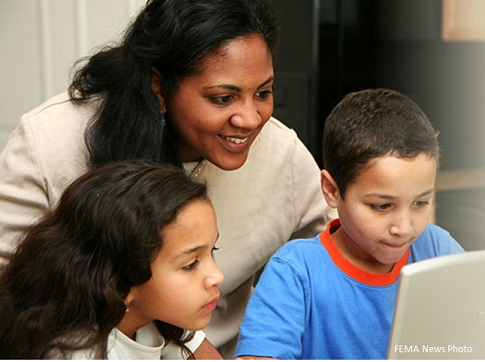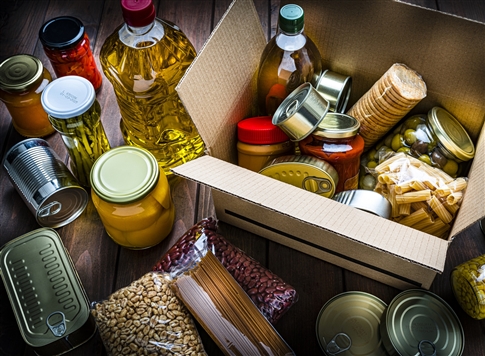Be 2 Weeks Ready
Your hydration matters, especially in times of stress. A plan for emergency drinking water will help you gather and store enough water for 14 days and you'll know how to make it safe to drink.
Safety Considerations
- Potable means "Safe to Drink." Potable water is water that is not contaminated and is safe to use for drinking, brushing your teeth, food prep, and hygiene.
- Water typically weighs 8.3 pounds per gallon. Store it where you can reach it and move it.
- Never use pool cleaning tablets to treat drinking water.
- If you are unsure if your water is safe, do not use it.
How much water do you need?
The average person uses about 80-100 gallons of water per day for indoor home uses. How much water you need to Be 2 Weeks Ready depends on several factors. Each person will need daily water for drinking, meal preparation and cleanup, and personal hygiene. The amount of water you’ll need will also be impacted by the kinds of foods you plan to eat (pasta, oatmeal, baby formula, powdered milk, etc.) and if you have pets.
You should store at least 14 gallons of water per person in your household (enough for two weeks).
How to store water
Storing water for use during a disaster is critical. Just like with food, it can be difficult to find extra space to store your emergency water supply. Store what you can, and keep in mind the following:
- Store water where anyone in the household can access it.
- If possible, store water in a dark, dry, consistently cool space that stays at a relatively constant temperature (50-70 F or 10-21 C). Treat your water if you have any concerns.
- If possible, do not store it in direct sunlight.
- Do not store water near chemicals, fuel, pesticides, herbicides, or products with strong odors that can be absorbed by the storage container and transferred to the water.
- If possible, store parts of your water supply throughout your living space so if a disaster damages part of your living space, you can still access other parts of your supply.
- Store some water in your freezer to create jugs of ice that can be used in a cooler when transporting food and provide safe drinking water as they melt.
- Storing water up high can be dangerous because it could fall during an earthquake or be difficult to move.
Some creative spaces where you can store water include:
- Under beds and sinks.
- In cabinets and closets.
- Behind books on bookshelves.
- In garages and storage sheds.
- Under car seats
Storing and treating water
Following a disaster, clean drinking water may not be available. Experts recommend that residents of the Pacific Northwest store 14 gallons of water per person in your household (enough for two weeks).
Here are some water storage and treatment tips:
- Store water in a number of different locations such as under the sink, in the garage, a storage shed, or closet. Check out our video for tips on storing water when you don't have a lot of space.
- Purchase bottled water from the store, or buy and fill your own containers.
- It's safe to store water in cleaned and disinfected soda bottles, but do not use milk or juice containers for water storage.
- Learn how to clean and prepare water storage containers.
- Know how to treat water if necessary. Both the EPA & CDC recommend boiling or chlorinating "suspicious" water before use.
Emergency Water Stations
EWEB is developing neighborhood emergency water stations. Working with community partners, we now have seven, fully operational emergency wells and we are in the process of constructing additional sites.
Locate the emergency water station nearest to your home and plan how you would get to the site and transport water in an emergency. You will need to bring your own container, and water obtained from an emergency water station will need to be treated prior to consumption.
Learn moreSecuring your water heater and furniture
Water heaters can move or tip over if not securely anchored to the wall or floor. For a small investment of time and money, you can avoid spilling gallons of precious water that could be useful in an emergency. Purchase and install a strap or bracing kit from your local hardware store, or have a licensed plumber strap your water heater according to code.
In addition to the water you have stored for drinking and cooking, your water heater could provide you with 30 -80 gallons of water for sanitation and other emergency uses.
Download and print instructions for accessing water from your water heater in an emergency.
Wall units, dressers, bookshelves, televisions and other heavy furniture should be anchored to the wall the protect occupants, help prevent toppled items from blocking exits, and mitigate damage. Check out the FEMA Earthquake Home Hazard Hunt for recommendations on reducing earthquake hazards in your home.
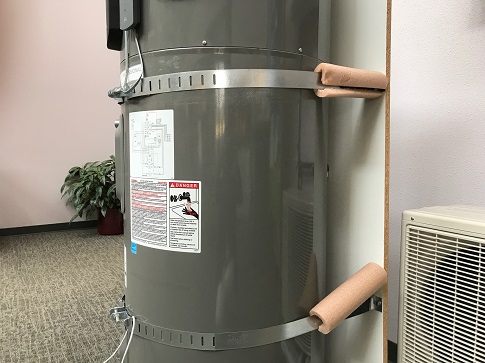
Related Programs
Here are some ideas to help your family stay safe and comfortable during an emergency.
Here are some tips about creating an emergency communication plan and signing up for local emergency alerts.

